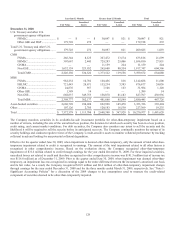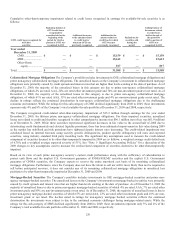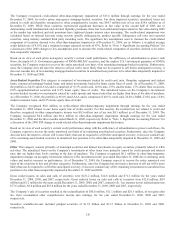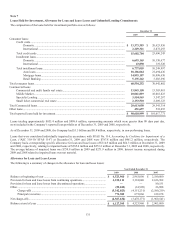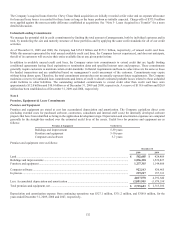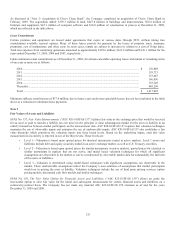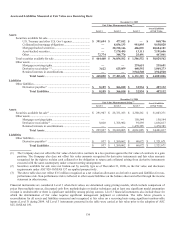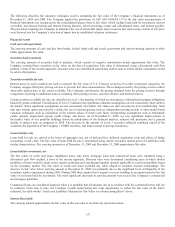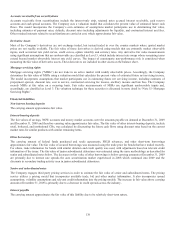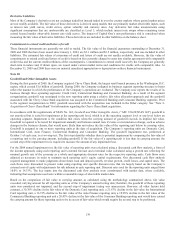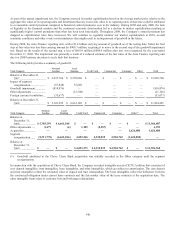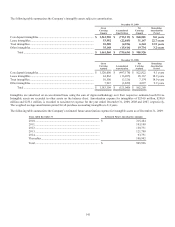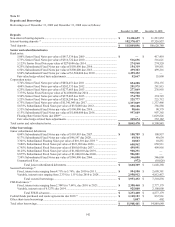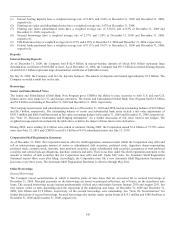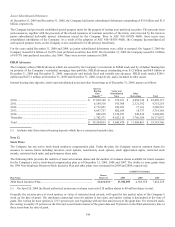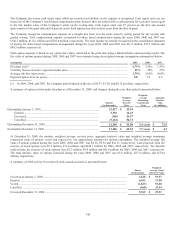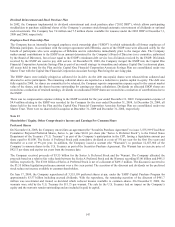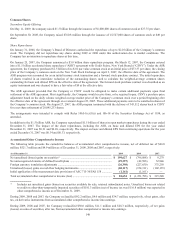Capital One 2009 Annual Report Download - page 151
Download and view the complete annual report
Please find page 151 of the 2009 Capital One annual report below. You can navigate through the pages in the report by either clicking on the pages listed below, or by using the keyword search tool below to find specific information within the annual report. 138
Accounts receivable from securitizations
Accounts receivable from securitizations include the interest-only strip, retained notes accrued interest receivable, cash reserve
accounts and cash spread accounts. The Company uses a valuation model that calculates the present value of estimated future cash
flows. The model incorporates the Company’s own estimates of assumptions market participants use in determining fair value,
including estimates of payment rates, defaults, discount rates including adjustments for liquidity, and contractual interest and fees.
Other retained interests related to securitizations are carried at cost, which approximates fair value.
Derivative Assets
Most of the Company’s derivatives are not exchange traded, but instead traded in over the counter markets where quoted market
prices are not readily available. The fair value of those derivatives is derived using models that use primarily market observable
inputs, such as interest rate yield curves, credit curves, option volatility and currency rates. Any derivative fair value measurements
using significant assumptions that are unobservable are classified as Level 3, which include interest rate swaps whose remaining terms
extend beyond market observable interest rate yield curves. The impact of counterparty non-performance risk is considered when
measuring the fair value of derivative assets. These derivatives are included in other assets on the balance sheet.
Mortgage servicing rights
Mortgage servicing rights (“MSRs”) do not trade in an active market with readily observable prices. Accordingly, the Company
determines the fair value of MSRs using a valuation model that calculates the present value of estimated future net servicing income.
The model incorporates assumptions that market participants use in estimating future net servicing income, including estimates of
prepayment spreads, discount rate, cost to service, contractual servicing fee income, ancillary income and late fees. The Company
records MSRs at fair value on a recurring basis. Fair value measurements of MSRs use significant unobservable inputs and,
accordingly, are classified as Level 3. The valuation technique for these securities is discussed in more detail in “Note 15- Mortgage
Servicing Rights”.
Financial Liabilities
Non-interest bearing deposits
The carrying amount approximates fair value.
Interest-bearing deposits
The fair values of savings, NOW accounts and money market accounts were the amounts payable on demand at December 31, 2009
and December 31, 2008 and therefore carrying value approximates fair value. The fair value of other interest-bearing deposits, include
retail, brokered, and institutional CDs, was calculated by discounting the future cash flows using discount rates based on the current
market rates for similar products with similar remaining terms.
Other borrowings
The carrying amount of federal funds purchased and resale agreements, FHLB advances, and other short-term borrowings
approximates fair value. The fair value of secured borrowings was measured using the trade price for bonds that have traded recently.
For others, trade information for bonds with similar duration and credit quality was used, with adjustments based on relevant credit
information of the issuer. The fair value of junior subordinated debentures was estimated using the same methodology as described for
senior and subordinated notes below. The decreases in fair value of other borrowings is below carrying amounts at December 31, 2009
are primarily due to interest rate spreads the auto securitization market experienced in 2008 which continued into 2009 and the
discounts in secondary trading activity seen in junior subordinated debentures.
Senior and subordinated notes
The Company engages third party pricing services in order to estimate the fair value of senior and subordinated notes. The pricing
service utilizes a pricing model that incorporates available trade, bid and other market information. It also incorporates spread
assumptions, volatility assumptions and relevant credit information into the pricing models. The increase in fair value above carrying
amount at December 31, 2009 is primarily due to a decrease in credit spreads across the industry.
Interest payable
The carrying amount approximates the fair value of this liability due to its relatively short-term nature.


